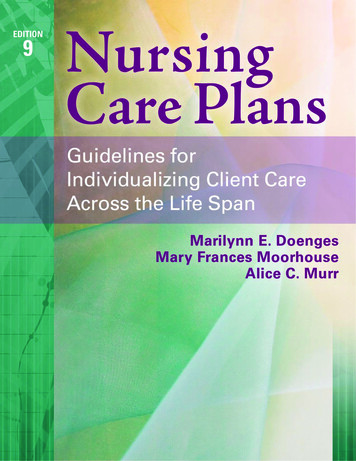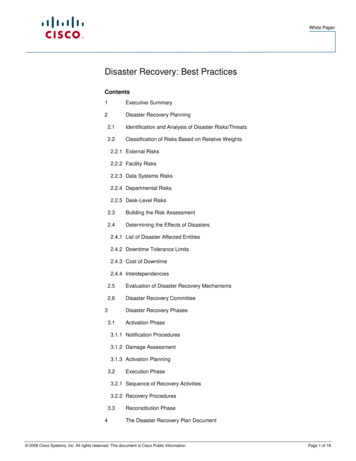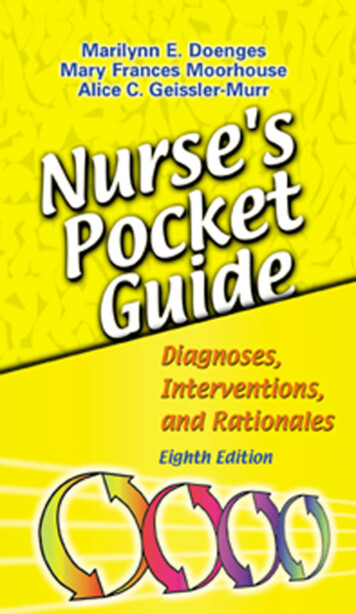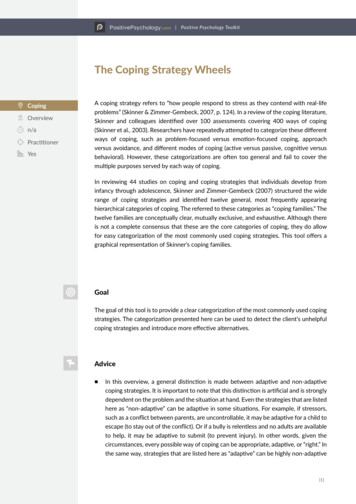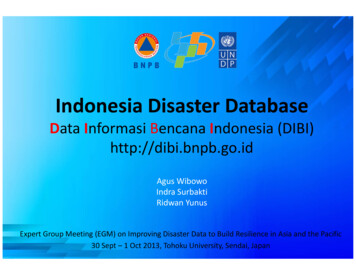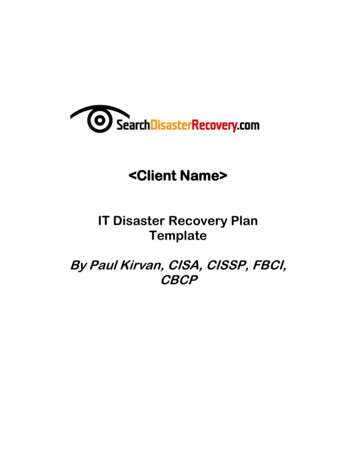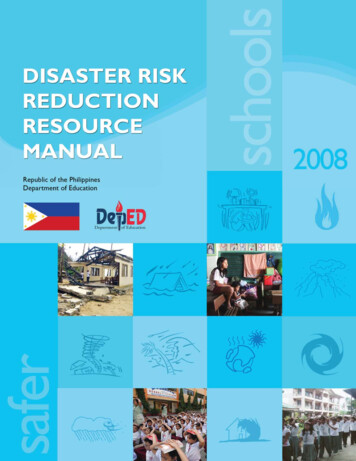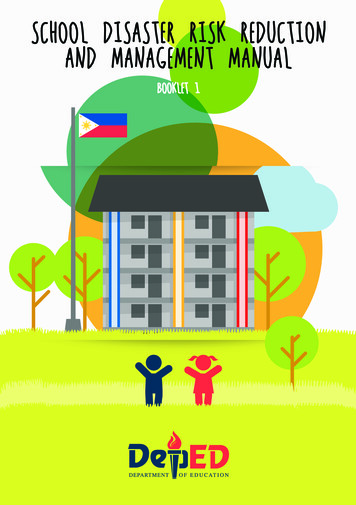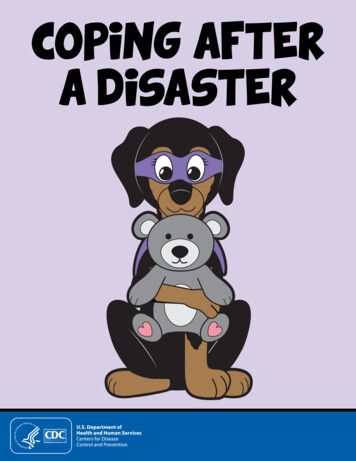
Transcription
COPING AFTERA DISASTER
This series has been endorsed by:www.healthychildren.org
Note to Parents, Guardians, and TeachersThe Centers for Disease Control and Prevention hascreated this activity book to offer parents and educatorsan interactive way to talk to kids about how to cope aftera disaster. We hope you will encourage its use in yourschools, communities, and families to help children talkabout their feelings after a disaster, and learn positiveways to express their emotions in uncertain times.1
Wrigley and her family are learning about emergenciesand disasters. A disaster or emergency can hurt peopleand damage buildings, houses, and neighborhoods. Bigstorms, floods, and wildfires are all types of disasters.2
Disasters can be scary and confusing. Wrigley wants you toremember that a disaster is not your fault. You did not doanything to make it happen.3
There are different types of disasters. A natural disastercould be a tornado, hurricane, flood, or wildfire. It canbreak or knock down trees, houses, and buildings. Peoplecan get hurt.TORNADOEARTHQUAKEHURRICANEFLOODWILDFIRENATURA LDISASTERS4
A disaster could also make a lot of people very sick.5
Disasters can be scary for kids, grown-ups, and pets, too.Tell a grown-up how you feel. It’s okay to ask questions.How do you feel today? Circle one of these feelings ordraw your own in the space below.HAPPYSADMADCONFUSEDSCARED6
Sometimes a disaster will damage your home or things thatare special to you. You may have to stay somewhere elseif your home is not safe. Wrigley’s family loves her and willtake care of her if she has to leave her house.7
There are people all around you who can help! You willnot be alone. Wrigley has her family to help, and evenher neighbors.Draw a picture of someone you can talk to when youneed help.8
Look for the helpers around you. Your parents, teachers,and grown-ups like fire fighters, police officers, or doctors arethere to help keep you safe.FIREDOCTORFIGHTERPOLICETEACHEROFFICERPARENTS9
If you get scared, a good way to calm down is to takedeep breaths. Breathe in deep and slow. Try to let theair out as slow as you can. Wrigley likes to pretend she isblowing up a balloon really slowly. Do it again! And onemore time.10
You may feel different after a disaster than you did before.Tell a grown-up if you:Have nightmares or areafraid to sleep with thelights off.Are sad or angry.Don’t feel like playing withyour friends.Have aches or pains thatyou don’t usually feel.11
It’s okay if you or your friends need different types of helpfrom family and others. Wrigley likes quiet time and lotsof hugs.If you feel scared or sad for a long time, let yourparents know so they can take you to someoneto talk about how you feel.12
WORD SEARCHIt’s good to do something you like to do. Some kids liketo read, draw, paint, dance, color, or put on a play withfriends. What do you like to do?Help find all of the fun activity words below. The words canbe across, down, or even diagonal.AEYKGYCDARDPGJISDLPAN MR CS D P X F D J B SCF G ZU U WE L J LSINGSKIPSPORTSTOYS13
SECRET MESSAGEWrigley and her family like to do lots of fun things.Decode the secret message to find out what Wrigley likesto do when she feels sad.1911919KEY ��Z141214712725!
You can be a helper too! You can help your family bytaking care of your pet, picking up your toys, or beingextra kind to your family and friends. Help your friends andbrothers or sisters by being a good listener! If your friendsor siblings are sad or upset, ask a grown up for help.15
Cut HereGREAT JOB!(Your Name)learned so much about disasters!If there is a disaster, remember: Look for helpers around you! A disaster is not your fault. Talk to a grown-up about your feelings. Do something you like to do! Read a book,sing a song, or play a game to feel better. Be a helper! Help your family and other peoplearound you.Here are a few things I can do if I feel scared:12316
Written by Centers for Disease Control and Prevention and AmericanAcademy of PediatricsArtwork and layout by Jennifer Hulsey Oosthuizen
U.S. Department of Health and Human ServicesCenters for Disease Control and PreventionFor more fun activities visitwww.cdc.gov/phpr/readywrigleyCS289191
created this activity book to offer parents and educators . an interactive way to talk to kids about how to cope after a disaster. We hope you will encourage its use in your schools, communities, and families to help children talk about their feelings after a disaster, and learn po
